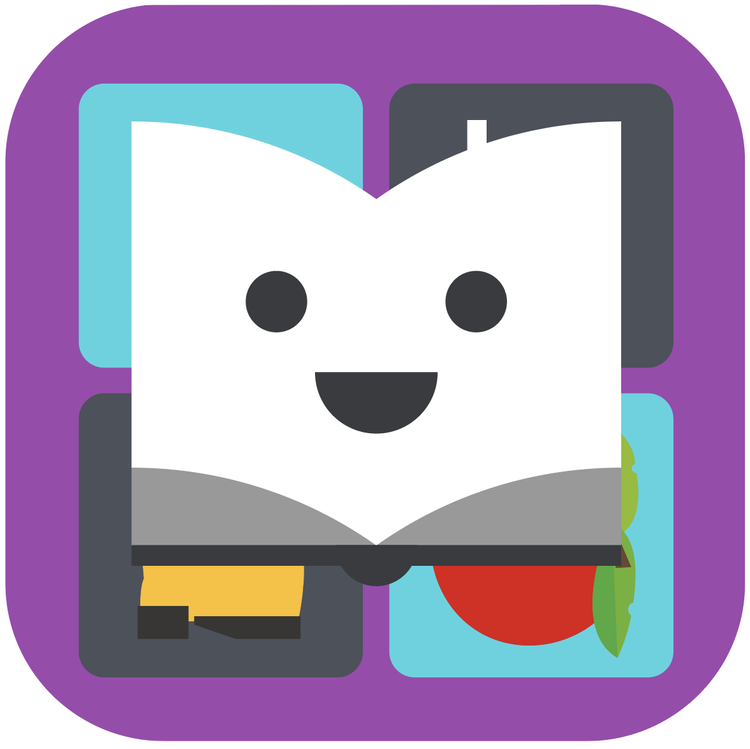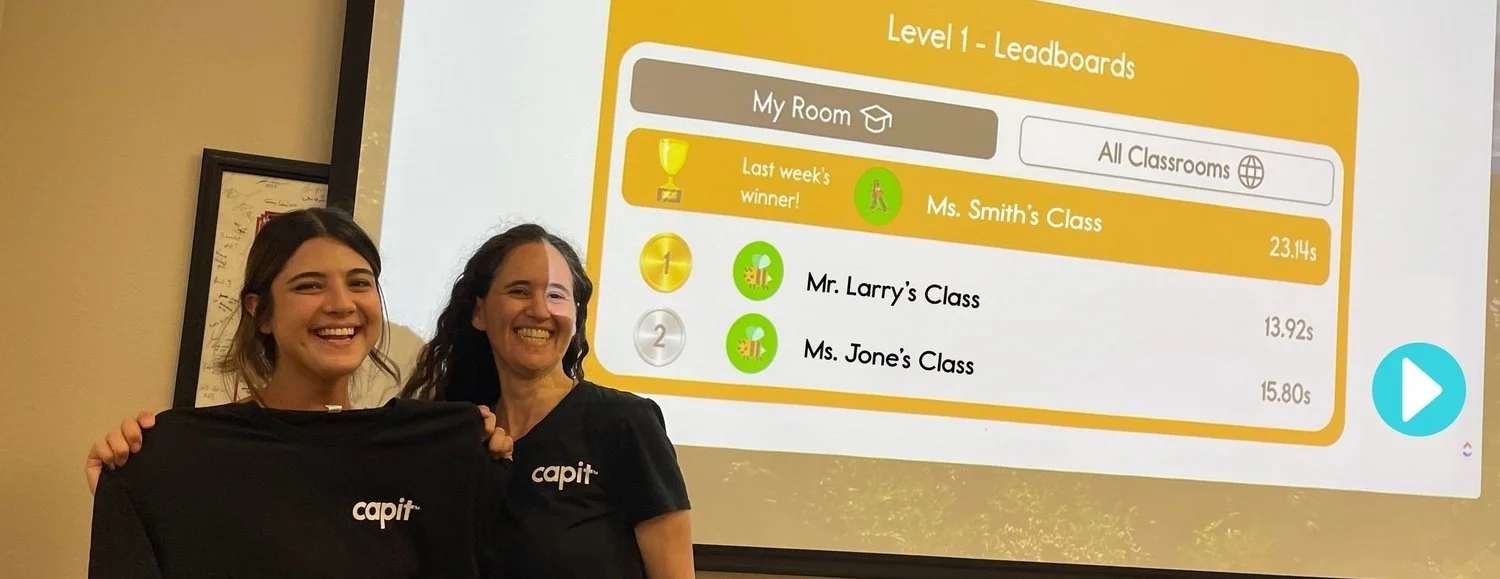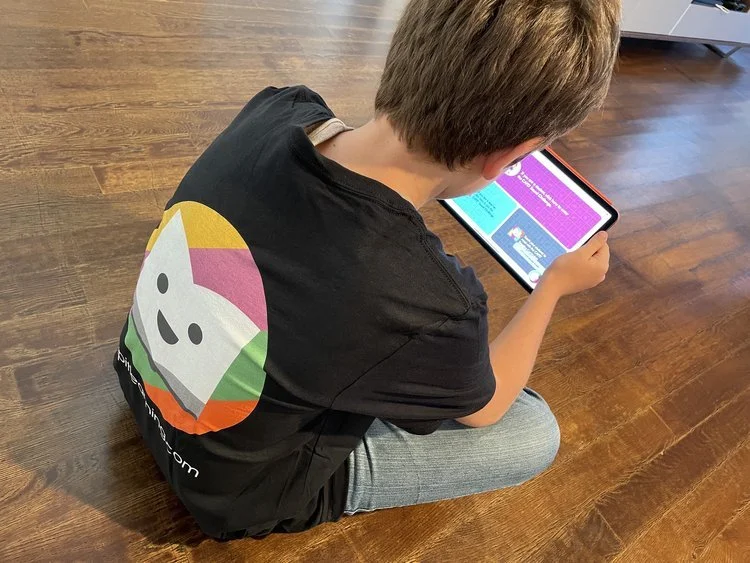CAPIT Sound Challenge
Join the 2025
Ensuring All Students Crack the Alphabetic Code Before 2026
Free to Schools, Districts, and State DOE.
This nationwide competition will help your students crack the alphabetic code by mastering the sounds (phonemes) of the English language and their basic spelling patterns in a fun and interactive way.
Click Here to share with a friend or colleague.
-
Students and teachers will compete with other classrooms from across the country. Parents can join along to support their kids at home to help them master the building blocks necessary for reading success.
The Sound Challenge will run from December 1 to December 31. We’ll announce the winner on January 6. Don’t wait - join today!
The winner will receive a CAPIT prize for all your students.
Proud Teacher
Proud Champion
“The CAPIT Sound Challenge is the most addicting phonics activity I have ever seen. My students love it, and they are learning their letters and sounds at an incredible pace. Thank you CAPIT!”
T-shirts and Certificate
Celebrate Your Students’ Accomplishment and see them on our Live Leaderboard
The CAPIT Sound Challenge is part of the Capit Learning family of resources, which includes: Preschool Reading Curriculum • Tier 1 Core Phonics Supplement • Tier 2 Accelerated Intervention • Tier 3 Sped Reading Solution • Professional Learning • Multisensory Kit™ Classroom Kit • Movable Alphabet Box.
Teachers
Create your class, invite your students, and let the competition begin. You will be amazed at how quickly they learn the letters and their sounds. Please send the CAPIT Sound Challenge home so your students can compete with their parents and siblings.
District Admins
Run a personalized district-wide competition promoting foundational skills—at no cost. Classes across your district compete; each month, the winning class receives certificates and recognition on your district’s personalized leaderboard.
What Makes the CAPIT Sound Challenge Unique?
The CAPIT Sound Challenge helps students master letter sounds quickly and enjoyably because we employ a science-based method known as Visual Mnemonics.
-
Research and experience indicate that Visual Mnemonics are an efficient and fun method of helping students remember the relationship between the sound of a letter and its visual representation. A Visual Mnemonic is like “cognitive super glue,” quickly pairing “Sounds” and “Spellings” to one another with a lasting bond.
CAPIT provides unique Visual Mnemonics for every letter in the English language. Our Visual Mnemonics look and sound like the lower- and uppercase letters. They function as visual aids, helping students associate letters with images they can visualize, store in their memory, and later easily recall.
For further reading on the use of visual mnemonics, Click Here. And Click Here to watch a webinar.
We Reinvented the Alphabet Song
As part of the CAPIT Sound Challenge, you and your students will gain access to our unique ABC Song! The ABC Song—sung to a tune popularized by Mozart—is arguably the most recognizable in all English-speaking countries. However, this song only teaches the names of the letters.
-
Although letter names are important, letter names do not help students read or spell. For that, students must learn which phoneme corresponds with which letter.
We reimagined the ABC Song and created a song that teaches students the shape of each letter and its corresponding phoneme, preparing and enabling them to read and spell.
-
Knowledge of letter shapes and their corresponding sounds is essential for learning to read and write English and is one of the best predictors of later literacy achievement. Conversely, children lacking alphabet knowledge are more likely to experience reading difficulties.
We launched the CAPIT Sound Challenge to ensure all students quickly gain this crucial foundational skill—and do so with joy and excitement!
Furthermore, we believe that knowledge of letters and their corresponding sounds is a vaccine against all instructional approaches not rooted in phonics and the Science of Reading. A child who can automatically decode letters into speech sounds cannot transition to a whole-word reading approach or the three-cueing system. Once the phonics seed has taken root, it cannot be uprooted.
(Sources: Ehri, 2015; Hulme, Bowyer-Crane, Carroll, Duff, & Snowling, 2012; Georgiou, Torppa, Manolitsis, Lyytinen, & Parrila, 2012; Lonigan, Schatschneider, Westberg, & The National Early Literacy Panel, 2008a; S´en´echal, LeFevre, Smith-Chant, & Colton, 2001; Whitehurst & Lonigan, 1998; Denton & West, 2002; Strang & Piasta, 2016; Catts, Fey, Zhang, & Tomblin, 2001; Piasta, Petscher, & Justice, 2012; Torppa, Poikkeus, Laakso, Eklund, & Lyytinen, 2006.)
-
Letter names are important, but knowledge of letter names does not help students read or spell. Our Phoneme First approach is more efficient, effective, and equitable. CLICK HERE to learn more,
-
The CAPIT Sound Challenge introduces students to all 40+ sounds (phonemes) in the English language, including the consonant digraphs, vowel diphthongs, r-controlled vowels, and the dark-l. Don't hesitate to contact us to learn more about the CAPIT pedagogy. We love nerding out on this stuff.
-
The value of mnemonics for teaching letter-sound relations to kindergartners is supported by evidence. In a study by Ehri, Deffner, and Wilce (1984), children were shown letters drawn to assume the shape of a familiar object, for example, s drawn as a snake, h drawn as a house (with a chimney). Memory for the letter-sound relations was mediated by the name of the object. Children were taught to look at the letter, be reminded of the object, say its name, and isolate the first sound of the name to identify the sound (i.e., s snake -/s/). With practice they were able to look at the letters and promptly say their sounds. Children who were taught letters in this way learned them better than children who were taught letters by rehearsing the relations with pictures unrelated to the letter shapes (e.g., house drawn with a flat roof and no chimney) and also better than children who simply rehearsed the associations without any pictures…The task of learning the shapes and sounds of all the alphabet letters is difficult and time-consuming, particularly for children who come to school knowing none. The relations are arbitrary and meaningless. Techniques to speed up the learning process are valuable in helping kindergartners prepare for formal reading instruction. The motivational value of associating letters with interesting characters or hand motions and incorporating this into activities and games that are fun is important for promoting young children’s learning. If the task of teaching letters is stripped bare to one of memorizing letter shapes and sounds, children will become bored and easily distracted and will take much longer to learn the associations.
—National Reading Panel Report, 2-125
For further reading and a webinar on the use of Visual Mnemonics, CLICK HERE.








